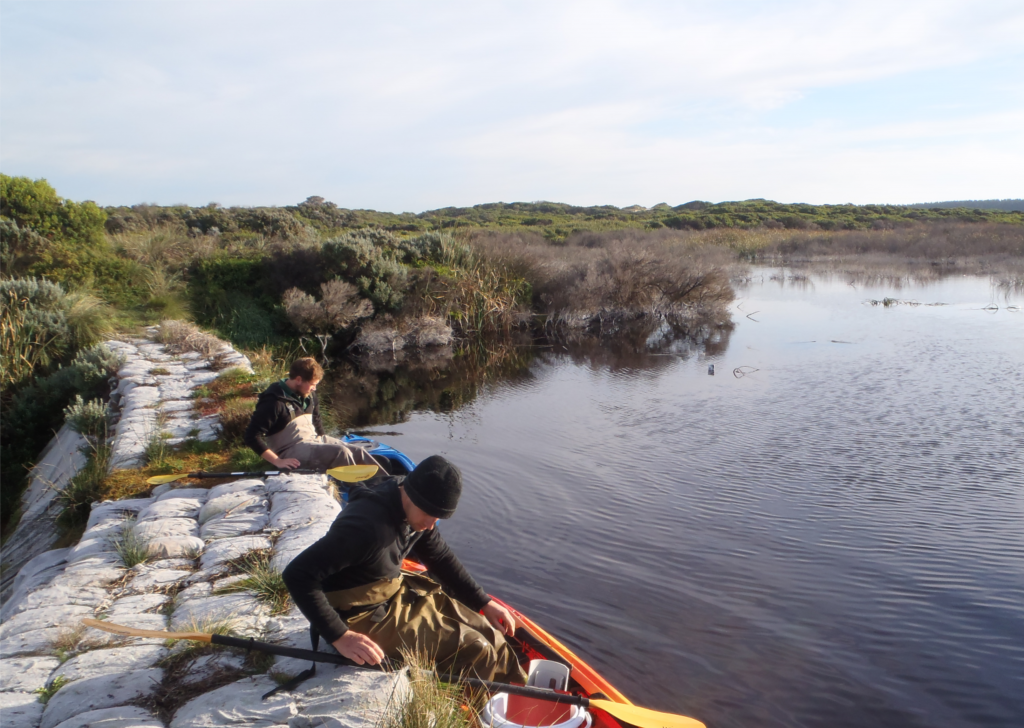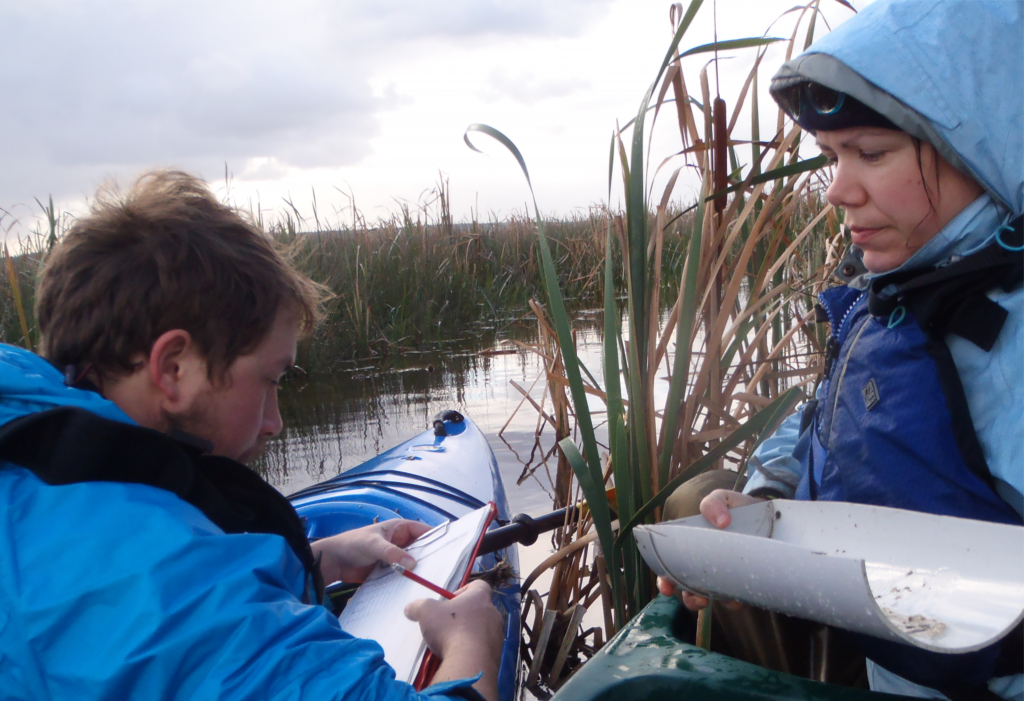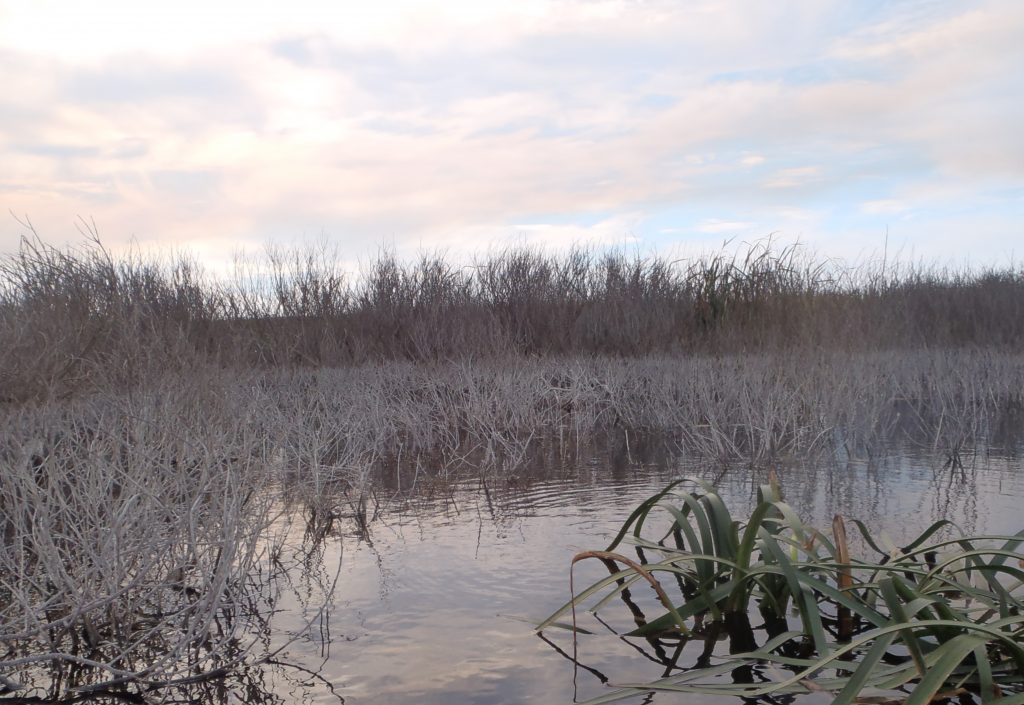Long Swamp fish monitoring update
Many community members would remember the feeling of satisfaction after helping build a trial stricture (made of 7000 sand bags) to regulate the final artificial outlet from Long Swamp at Nobles Rocks. This weir successfully resulted in the recovery of approximately 200 hectares of aquatic habitat upstream of the outlet and with the help of significant rainfall last winter and spring, resulted in the reinstatement of the natural flows and connectivity throughout the length of Long Swamp for the first time in decades. Since the completion of this work in early 2015, we’ve been undertaking biannual fish monitoring to assess the native fish responses to restoration, which also includes downstream sampling in Oxbow Lake and the lower Glenelg River estuary.

Casual NGT staff member Cory Young and volunteer Travis Brown prepare to board their kayaks from the trial structure.
Over the past three years, 19 different estuarine and marine species, together with six freshwater specialists and three diadromous fish (those that migrate between freshwater and salt water to breed: the shortfinned eel, congolli and common galaxias) have been recorded across Long Swamp and the lower estuary. The effects of the restoration were clearly evident late last year when increased connectivity allowed several key natives, including little galaxias and Yarra pygmy perch, to colonise new areas of Long Swamp and undergo successful breeding. We were particularly excited to record Yarra pygmy perch upstream of the Nobles Rocks outlet for the first time.

NGT staff members Cory Young and Nicole Mojonnier sorting the catch at ‘Ewings’ – a site in the middle of Long Swamp

A contrast between the old (remnants of dead shrubs) and the new (triglochin beds) vegetation at Nobles Rocks. The high water line from late last year is clearly evident on the tea-tree.
Autumn monitoring a few weeks ago, revealed that fish communities are continuing to respond and adjust to increased habitat and connectivity. New habitat at Nobles Rocks continues to support large numbers of little galaxias and small numbers of Yarra pygmy perch. Common galaxias clearly benefited from the increased connectivity late last year, navigating their way up to Nobles Rocks (via Eel Creek) where they were present in high numbers. With the eastern gambusia (an introduced pest species of fish) now occurring throughout most of Long Swamp, the water permanency and increased habitat complexity at Nobles Rocks, achieved through restoration, may be critical in supporting key habitat for both little galaxias (fringing/highly vegetated areas) and Yarra pygmy perch (deeper waters). Other notable species caught further downstream in the estuary, included large estuary perch, juvenile shortfinned eels, juvenile congolli, longsnout flounder, an old wife and a weedfish.

